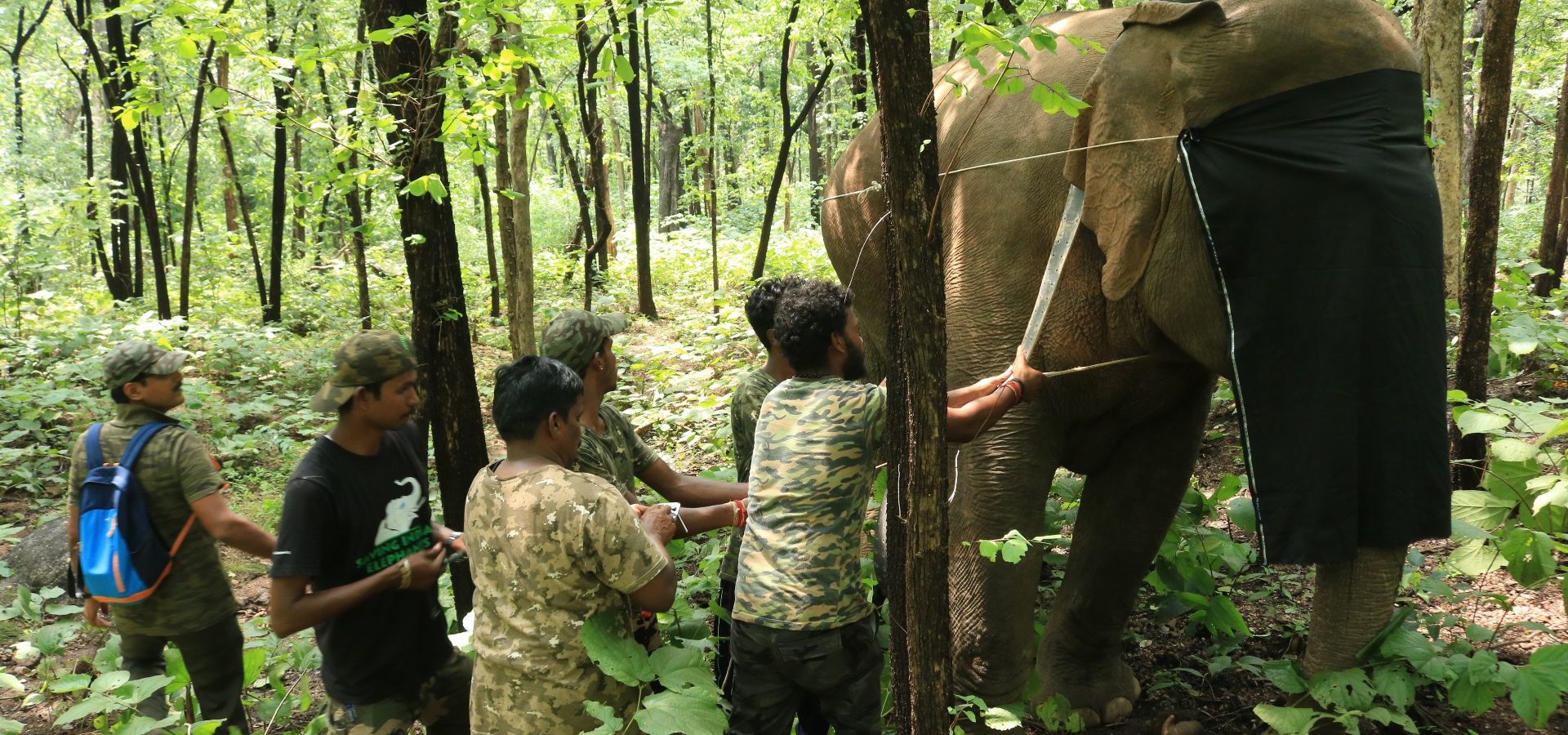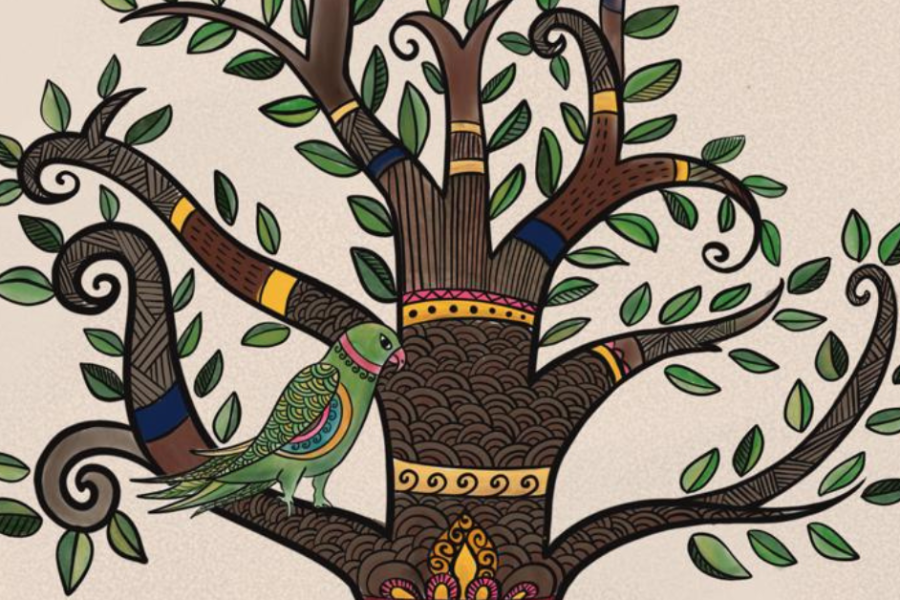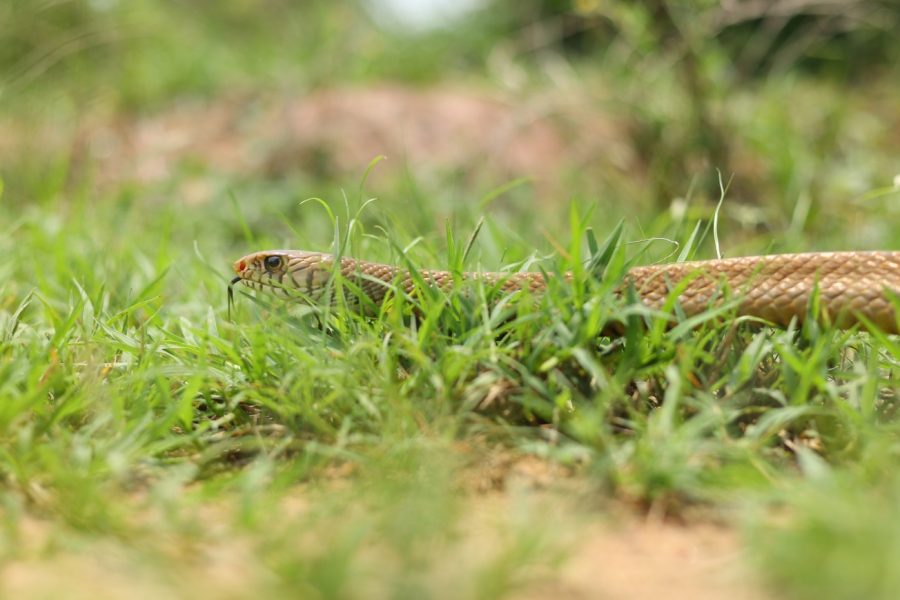Main photo above: GPS collaring a wild elephant like Van Devi is extremely challenging, expensive and dangerous.
As elephants began to return to central Chhattisgarh after an absence of over 50 years, human-elephant conflicts became more common. Not only did elephants pose a risk to human lives but also to human livelihoods, as elephants would raid the local crops, eating and damaging as they foraged the agricultural landscape. In 2017 villagers began to communicate information regarding elephant movement to Forest Department staff in hopes they would help push elephants away from sensitive areas. However, without proper trackers or detailed information on the elephant herd movements, the information often proved to be faulty. These false alarms took up a lot of energy and were stressful for the villagers. Additionally, the lack of accurate movement data often left the Forest Department unable to reach conflict sites in time to mitigate damages and negative interactions between humans and elephants.
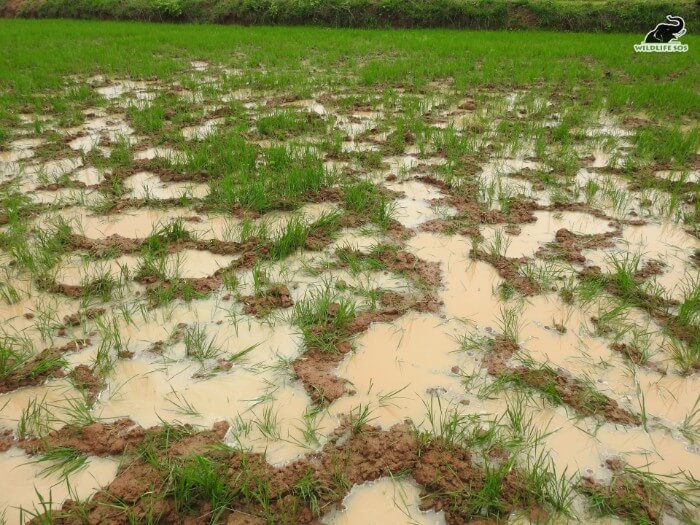
Clearly more elephant trackers were needed and Wildlife SOS quickly moved in to help. But Wildlife SOS also had another idea — That idea was to put a Global Positioning System or GPS collar on the matriarch of the herd causing much of the crop damage. This way the matriarch could be tracked in real time, though when we say real time there is a one or two-hour delay. We would know the general location of the herd at all times. Since the herd usually stays together, we could track the whole herd just by having the matriarch collared. This was our plan, and in September of 2018 the matriarch Van Devi of the Van Devi herd was collared.
Collaring an elephant is incredibly difficult, expensive, time consuming and dangerous. Elephants by their sheer size are one of the most dangerous, if not the most dangerous, animals in the forests of India or anywhere else in the world. It takes a large team to get the job done while making sure that neither the elephant nor team members are injured. And though bulls (male elephants) are much more dangerous than females, collaring females is made more fraught with danger by the fact that females stay in protective herds that will often not leave the location if one of the herd is tranquilized.
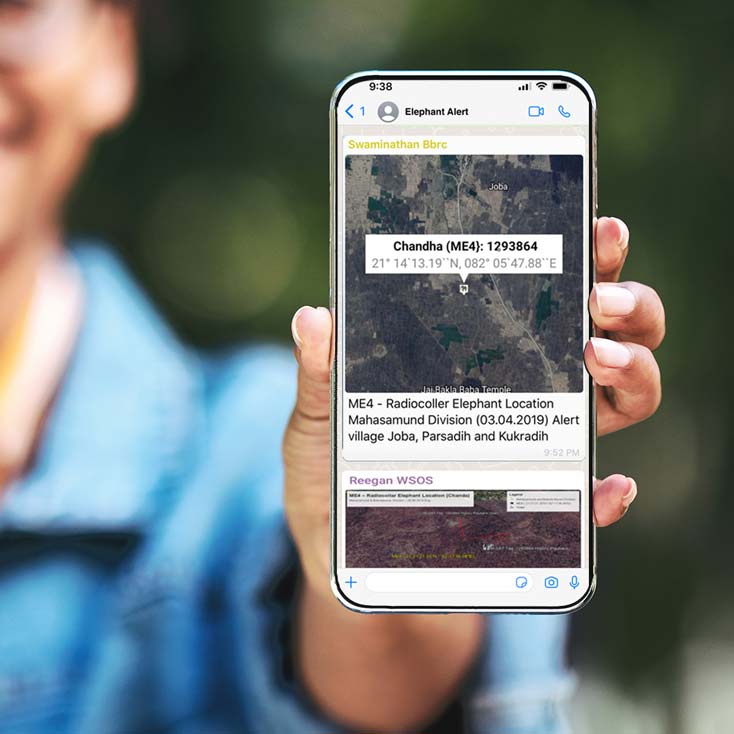
Once Van Devi was collared the elephant biologists could track the movement of the herd and see in advance what village areas the elephants were heading towards. But an early warning system was still needed to warn the right people, namely the villagers and those who would deter the herd without injuring elephants or causing them undue stress. A system was set up so that Van Devi’s movements are relayed to the Forest Department who relays the information to a rapid response “flying squad.” The squad is a crew specially trained to safely deter elephants and work with local community leaders and volunteers to keep people and elephants safe and informed via WhatsApp groups. This system operates much like the ‘Amber Alert’ system in the United States.
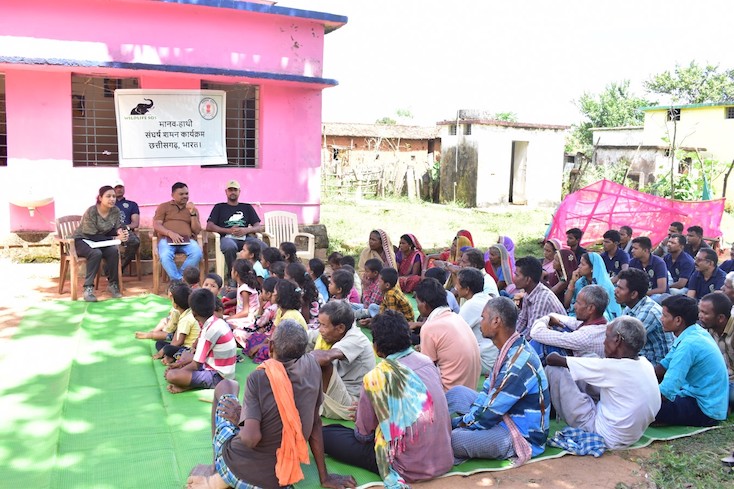
A total of 13 different WhatsApp groups are operating in Central Chhattisgarhi. Each group is made up of different stakeholders including Forest Department officials, village panchayat leaders and people from the administrative department, police department, and voluntary rapid response teams of local villagers. The rapid response teams share messages about the present location of the elephant herd, the nearest villages, the predicted villages where the elephants could be headed. The members of the WhatsApp groups can then easily communicate with the local people in their own local languages, in Hindi and English, and the elephants can then be deterred from entering villages.
The GPS collar on Van Devi stopped relaying elephant locations after two years due to battery life, which was how long the collar was expected to last. However, the Van Devi herd could still be tracked using VHF system on the collar. This method requires field staff actively tracking the elephants. After a year of tracking the herd with VHF, the collar came off of Van Devi altogether, thus ending our ability to track her with advanced technology. Wildlife SOS is now following the Van Devi herd the old-fashioned way with trackers. However, we have doubled the number of trackers so we can keep the herd and communities safe. We also have 2 years of detailed movements which biologists are able to study and potentially predict future movements.
Thanks to Wildlife SOS supporters, we are able to run efforts like the Early Warning system that help keep elephants and people safe as they peacefully co-exist. Thank you to Elephant Sanctuary of Tennessee for their continued support of this program.

